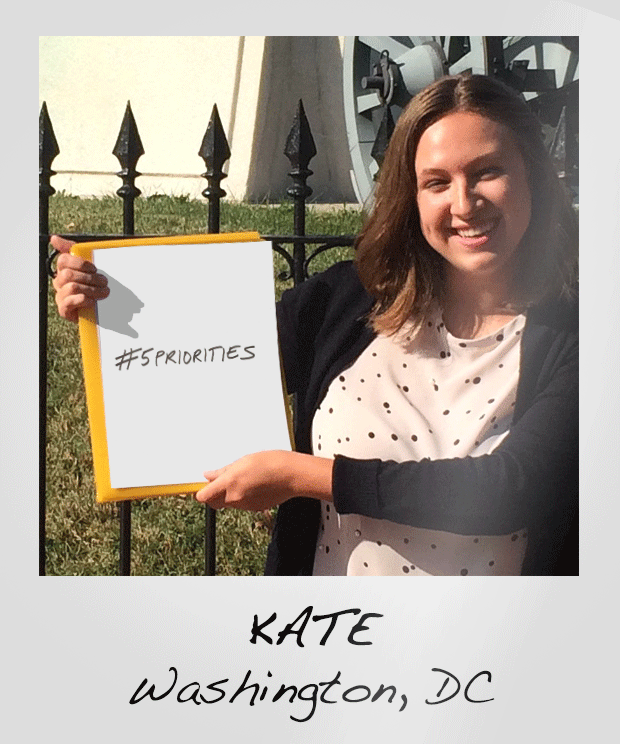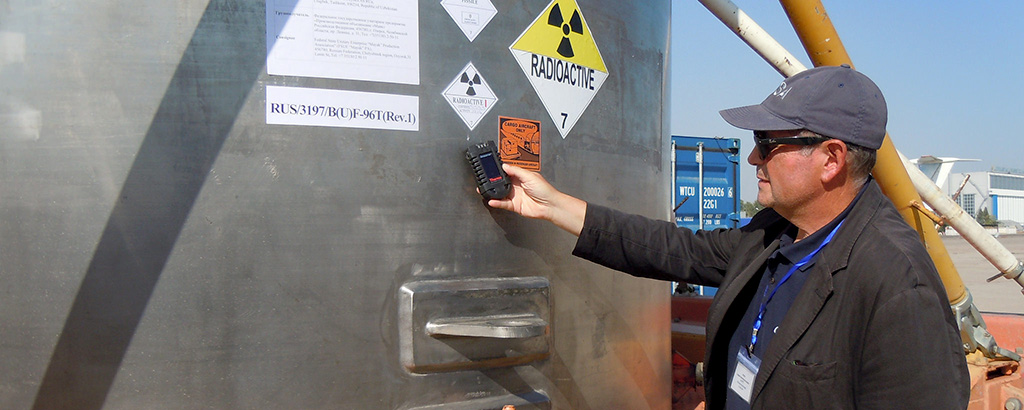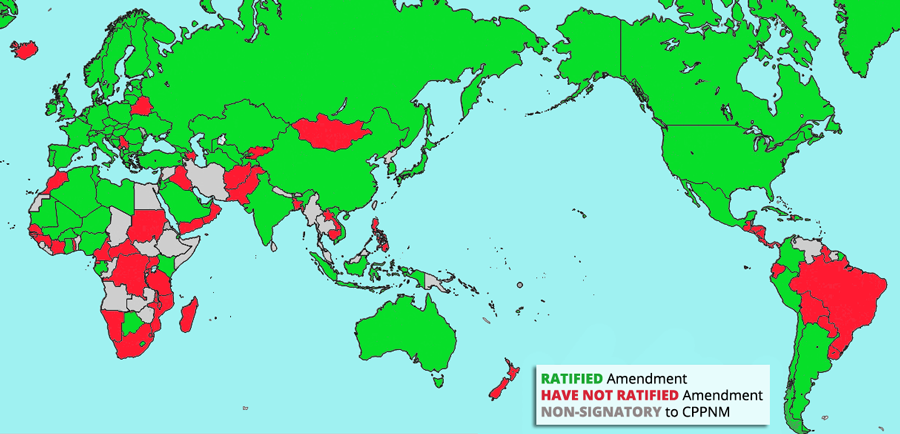Together, we can make a difference—at the 2016 Nuclear Security Summit and beyond. Find out what you can do to get involved.

Make Your Voice Heard
Here’s what you can do:
- Follow the Fissile Materials Working Group on Twitter (@FMWG) and Facebook (FMWGOrg), and use the hashtag #5Priorities.
- Take a picture with a #5Priorities sign in your hometown, and submit it to us.
In Your City
 Show your support for the 5 priorities and global nuclear security by taking a picture in your city holding a #5Priorities sign! You might just see it on the website in the future…
Show your support for the 5 priorities and global nuclear security by taking a picture in your city holding a #5Priorities sign! You might just see it on the website in the future…
Click here for a #5Priorities PDF… you can print it out, or just display it on your tablet if you’ve got one!
News & Views
2016.02.25
Solutions for a Secure Nuclear Future
In connection with the 2016 Nuclear Security Summit (only 5 weeks away!), the Fissile Materials Working Group will be hosting a side summit for nongovernmental organizations, Solutions for a Secure Nuclear Future, on March 30-31.
While in-person attendance at the SSNF summit is invitation-only, we’ll be livestreaming the March 30 proceedings—so if you can’t make it to Washington, DC, you can still follow along from wherever you are on the planet.
Check out the SSNF agenda, and take a look around the website to find out more. And if you’re posting about the summit on social media, be sure to use the official hashtag combo for SSNF 2016: #NGOSummit #NSS2016
Journalists: Be sure to get information about the SSNF press room, and mark your calendar for a luncheon press briefing at the National Press Club on March 23. For more information, contact Lesley McNeish at lmcniesh@partnershipforglobalsecurity.org.
2016.02.11
The 2016 Nuclear Security Summit website is live!
The 2016 Nuclear Security Summit in Washington, DC is only seven weeks away—and now they’ve got a website.
As you may have read on this site, the 2016 Nuclear Security Summit is likely to be the last of its kind—a gathering of global leaders devoted entirely to the issue of improving nuclear security. These summits, which have been held every two years since 2010 as part a process initiated by President Obama, have successfully drawn high-level attention to the crucial issue of nuclear security.
2016’s summit is likely to be the last Nuclear Security Summit and it’s especially significant because nuclear security requires sustained vigilance and continuous progress. That’s why it’s so important that at this year’s summit, our leaders come together around the 5 priorities we lay out here: policy objectives that experts have agreed are essential to ensure that dangerous nuclear materials are kept secure.
Check out the new NSS 2016 website—and share our most recent video or your picture with the hashtag #5Priorities on social media to let our leaders know that we need them to step up on nuclear security at the final Nuclear Security Summit.
2015.11.06
Michelle Cann: Nuclear Security in Five Words
Michelle Cann of the Partnership for Global Security has written a great article about the 5 Priorities on Nuclear Security Matters, a blog from the Belfer Center for Science and International Affairs at the Harvard Kennedy School:
A new YouTube video, released ahead of a government planning meeting for the 2016 Nuclear Security Summit, charges that stronger nuclear security can be as simple as five words. These five words are the 5 Priorities, a concept born in 2014 when a diverse group of nuclear security experts identified the most impactful policy changes that could advance global nuclear security. After rallying supporters and polishing their ideas, the 5 Priorities effort was launched to garner the attention of world leaders and help the broader public understand how the decisions made at the 2016 summit will impact them.
Nuclear security has never been an issue to ignite heated kitchen table debates at Thanksgiving, but the 5 Priorities for Global Nuclear Security campaign aims to make more people understand why they should care how the issue is being handled. The 5 Priorities are objective; they are not ideologically aligned as either “pro” or “anti” nuclear. Instead, they focus on the practical reality that as long as radioactive materials and technologies exist, they should be as safe and secure as possible.
5 Priorities supporters want the public to understand that radioactive materials are not only sequestered away in secluded military complexes or in remote locations in the snow drifts of Siberia. They are used every day, all around the world in medicine, research, and energy production. Nuclear power plants in 30 countries provide more than 10 percent of the world’s electricity production, and more than 60 new reactors are currently under construction in 15 countries. The majority of nuclear materials resides nuclear weapons programs, but the civil sector has accumulated stockpiles of separated plutonium that exceed 230 metric tons and more than 60 metric tons of highly-enriched uranium (HEU). That is enough material to make thousands of nuclear weapons. Ensuring that these materials remain secure is critical for the normal functioning of daily life.
Click here to read the whole article, and make sure to share it with your friends, family, and colleagues using the hashtag #5Priorities.
2015.09.29
HEU-Free: From the Caribbean to Uzbekistan
You wouldn’t think there’s a lot in common between the Caribbean and Uzbekistan. One is a balmy, breezy region of island paradises; the other is a landlocked, rugged country of deserts and mountains.
But they do have one thing in common: in the last week, both demonstrated a commitment to global security by getting rid of the last of their highly-enriched uranium. The IAEA certified this week that all HEU has been removed from Uzbekistan, and last week, the National Nuclear Security Administration removed the last kilogram of HEU from Jamaica to make the Caribbean yet another region where HEU is nowhere to be found.

Image credit: IAEA Flickr
HEU—highly-enriched uranium—is one of the most dangerous materials on the planet. Not only is it extremely radioactive, it’s also one of the primary ingredients for a nuclear weapon. That’s why it’s so important for our world leaders to make sure that all of it is secure—the central theme of the 5 Priorities.
And when countries like Uzbekistan or regions like the Caribbean go completely HEU-free, that’s a step in the right direction on Priority #5, which aims to reduce the risk by taking the most dangerous materials—HEU and plutonium—out of the hands of civilians entirely, and reducing military stockpiles of those materials as well.
Find out how you can help us challenge our leaders to come to an agreement in 2016 that will make it possible for many more regions of the world to join the Caribbean and Uzbekistan by going completely HEU-free.
2015.09.16
Botswana Ratifies CPPNM Amendment: 14* To Go
An important update on our previous post about the 2005 Amendment to the Convention on Physical Protection of Nuclear Material: Botswana has officially ratified the amendment!
That means that we need only 14* more nations to ratify the amendment (bringing the ratification number up to 2/3 of signatories), and it will go into full force.
This is an important amendment, because it plugs a huge gap in the original treaty. If the amendment goes into effect, nations will be required by the treaty to take security measures to protect the most dangerous nuclear materials—highly-enriched uranium and plutonium—whenever they’re in civilian hands. Since the original treaty only required security measures when those materials were being transported internationally, this amendment will be a huge step forward in nuclear security if it goes into effect.
But it’s not the total package: for that, our nations’ leaders need to come together on the 5 Priorities at 2016’s Nuclear Security Summit. Tell your leaders that we need them to take serious steps at the 2016 NSS by sharing your support for the #5Priorities on social media.
For now, though, let’s update the CPPNM Big Board:


* The magic number is still 14 because Kyrgyzstan just ratified the treaty—meaning that the number of nations needed to ratify the amendment has increased to 102.


